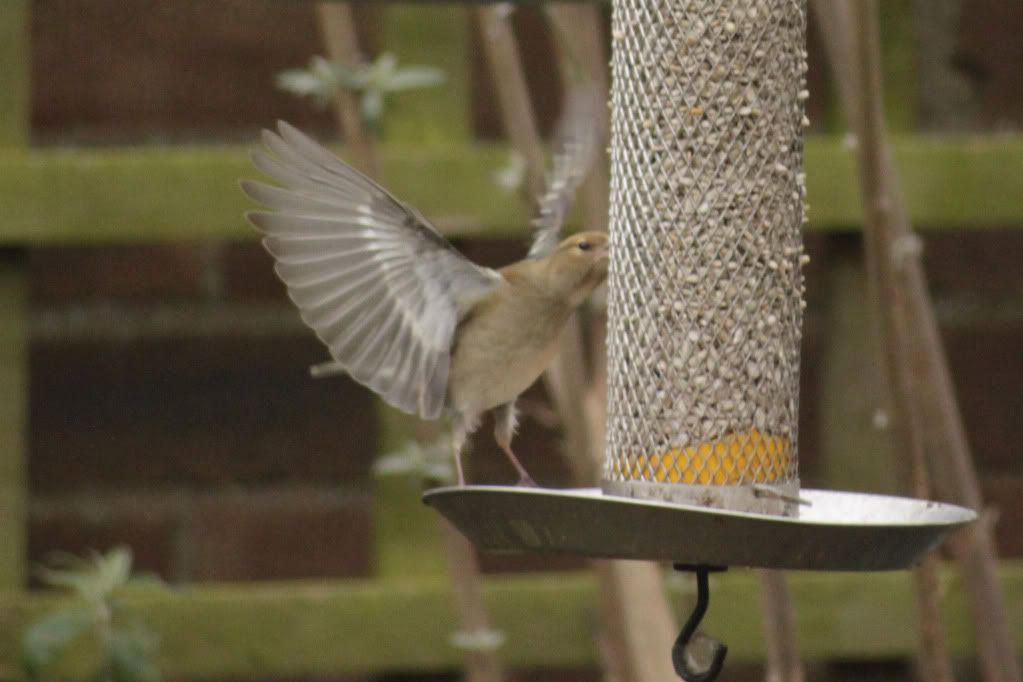For fans of twitter it has it's own hash tag #BGBW and the results will be available in May.
.
Our garden survey was undertaken between 3pm and 4pm on Saturday 29th:
.
Starlings: 10
Starling have previously featured in this blog back in October and were probably attracted to the dried meal worms and the pond as a source of drinking water.
.
One of the things that the Big Garden Birdwatch has demonstrated is the number of starlings recorded in our gardens has declined by 75% since 1985: http://www.rspb.org.uk/birdwatch/results/trends.aspx
South Abingdon seems to have a healthy starling population, somewhat helped by the nesting opportunities presented by roofs of the houses.
.
Goldfinches: 4
A disappointing number of goldfinches, they often appear in charms (collective name for goldfinches) of between 10 and 20, but during this hour there were only four.
.
.
Goldfinches have been a real success in recent years, possibly because of people who putting out nyger seed for them. We stopped using this as it was often ignored in favour of sunflower hearts - as seen above, with a goldfinch trying to intimidate a chaffinch, it failed and they shared the seeds..
Chaffinch: 3
There have been five chaffinches in the garden at any one time, but during the survey there were two males and one female:
.
.
Chaffinches are traditionally ground feeders, so it's interesting to see that they've learnt to use a feeder..
House Sparrow: 2
Like starlings, house sparrows have also suffered a huge decline in recent years (50%), also recorded by the big garden birdwatch: http://www.rspb.org.uk/birdwatch/results/trends.aspx
.
.
Sparrows also like the sunflower hearts and eat off the ground or off the feeders..
Blue Tit: 2
Blue Tits aren't migrants, so it is good to see a pair has survived the harsh winter and hopefully they'll make use of the garden's nest box.
.
.
Blackbird: 2A male and female blackbird are often to be seen in the garden - either winter migrants yet to return to Scandinavia or maybe they are a residential pair returned from migrating to warmer climates in europe. They have been digging for worms, eating crumbs dropped from the feeders and drinking from the pond:
.
.
Blackbirds are very territorial and will chase not only smaller birds (blue tits and chaffinches) but also each other) although they do seem wary of the starlings.
.
Pied Wagtail: 1
A real surprise, I've never seen one in the garden before and it only stayed for enough time to get a quick snap.
.
.
They are insectivorous and so it wouldn't have been interested in the sunflower hearts or meal worms, so maybe there are small flies over the lawn..
Other birds that regularly frequent the garden, but not during the period of the survey, are collard doves, woodpigeons, dunnocks and greenfinches, but one bird that has been absent from our garden for the past couple of years is the robin.
Maybe this national survey will reveal if it is just ours, or if there has been a national decline in robin numbers.












